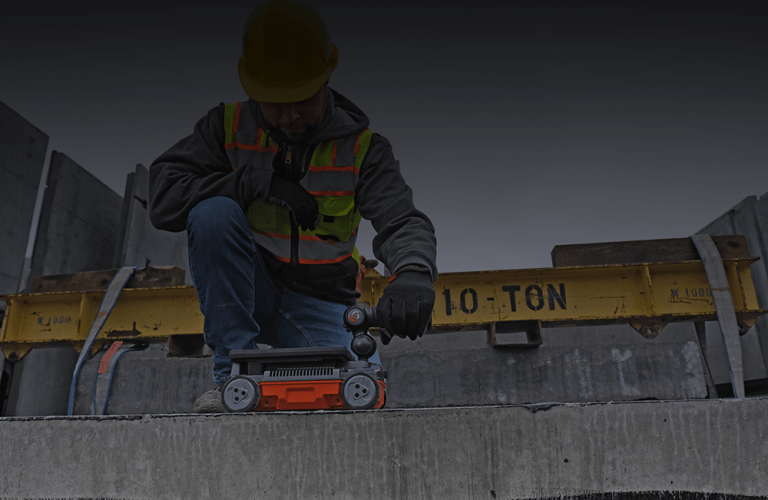RainierGPR Service Areas: Where We Offer Premier Concrete Scanning
RainierGPR Service Areas: Where We Offer Premier Concrete Scanning
Blog Article
Enhancing Project Preparation and Implementation With Advanced Concrete Scanning Methods
In the realm of job preparation and accuracy, execution and insight are important aspects that can make the difference in between success and obstacles. Advanced concrete scanning techniques have actually emerged as a sophisticated device set to elevate the requirements of job monitoring within the building industry.
Advantages of Advanced Concrete Scanning Techniques

Improved Accuracy in Project Evaluations
Enhancing task analyses via innovative concrete scanning strategies significantly increases the precision and dependability of building and construction analyses. By using sophisticated scanning modern technologies such as ground-penetrating radar (GPR) and 3D imaging, job groups can currently acquire in-depth insights into the condition of concrete frameworks, recognizing possible imperfections or weak points that might not show up to the naked eye. This enhanced degree of precision in job evaluations enables construction specialists to make even more educated decisions regarding repair and upkeep methods, causing improved overall task results.
Additionally, the enhanced accuracy in job assessments attained with advanced concrete scanning strategies aids in lessening the risk of unpredicted problems throughout the construction stage. By proactively detecting surprise anomalies within concrete frameworks, such as rebar rust or gaps, job teams can resolve these concerns at an early stage, staying clear of expensive hold-ups and rework later on in the project lifecycle. Inevitably, the improved precision in project evaluations facilitated by sophisticated concrete scanning methods adds to higher performance, cost-effectiveness, and high quality in building and construction jobs.
Very Early Identification of Architectural Obstacles
Very early detection of architectural challenges plays a crucial function in ensuring the stability and safety and security of concrete structures throughout the building procedure. Identifying Homepage prospective concerns at an early phase permits timely intervention, protecting against costly rework, routine hold-ups, and safety risks. Advanced concrete scanning strategies, such as ground-penetrating radar (GPR) and 3D imaging, make it possible for project teams to uncover concealed defects, spaces, reinforcement design disparities, and various other abnormalities that might endanger the structure's security.
By implementing these strategies throughout the preparation and execution phases, building and construction specialists can proactively address structural difficulties prior to they rise right into significant troubles. For example, discovering insufficient concrete cover over support bars at an early stage can stop rust and structural weakening in the lengthy run - RainierGPR Service Areas. Additionally, determining variants in concrete thickness or density can assist enhance material usage and guarantee uniform stamina residential or commercial properties across the structure

Ultimately, early recognition of architectural difficulties through innovative concrete scanning not just boosts the general official site high quality and toughness of the building and construction yet likewise adds to a safer built setting for residents and individuals.
Boosted Precaution in Building And Construction
The execution of durable security procedures is crucial in the building and construction sector to alleviate threats and guard the well-being of employees and stakeholders. To improve security steps, construction companies are increasingly taking on technical innovations such as wearable gadgets that keep an eye on workers' important signs and detect possible health concerns in real-time. By focusing on safety through the incorporation of advanced modern technologies and thorough training programs, building and construction tasks can substantially decrease accidents and produce a safe functioning environment for all involved.
Streamlining Task Monitoring Processes
To optimize operational performance and make certain task success in the building sector, an emphasis on improving job administration processes is vital. By implementing efficient job administration procedures, building tasks can decrease hold-ups, minimize expenses, and improve general performance.

Final Thought
In conclusion, the utilization of sophisticated concrete scanning methods supplies many benefits for project planning and implementation. These strategies give better accuracy in job analyses, very early recognition of architectural obstacles, boosted safety actions in building, and structured task monitoring procedures. Incorporating these techniques into project workflows can ultimately lead to more efficient and effective results in building projects.
Ultimately, the improved precision in job evaluations promoted by sophisticated concrete scanning methods contributes to greater effectiveness, cost-effectiveness, and quality in construction projects. RainierGPR Service Areas.
To maximize functional effectiveness and useful site guarantee project success in the building and construction market, a focus on simplifying project monitoring procedures is necessary. By carrying out efficient task administration processes, building and construction jobs can lessen delays, reduce expenses, and improve total efficiency. By streamlining job management processes via technology assimilation, clear communication, and data-driven approaches, building projects can accomplish better performance, cost-effectiveness, and successful end results.
These methods give enhanced precision in project analyses, early recognition of structural obstacles, improved safety and security steps in building and construction, and streamlined job monitoring processes.
Report this page